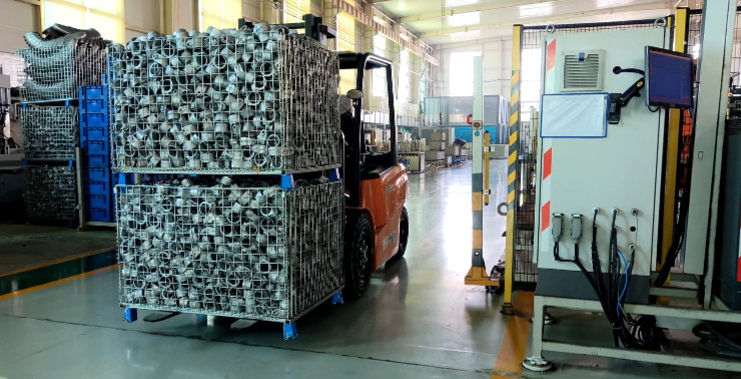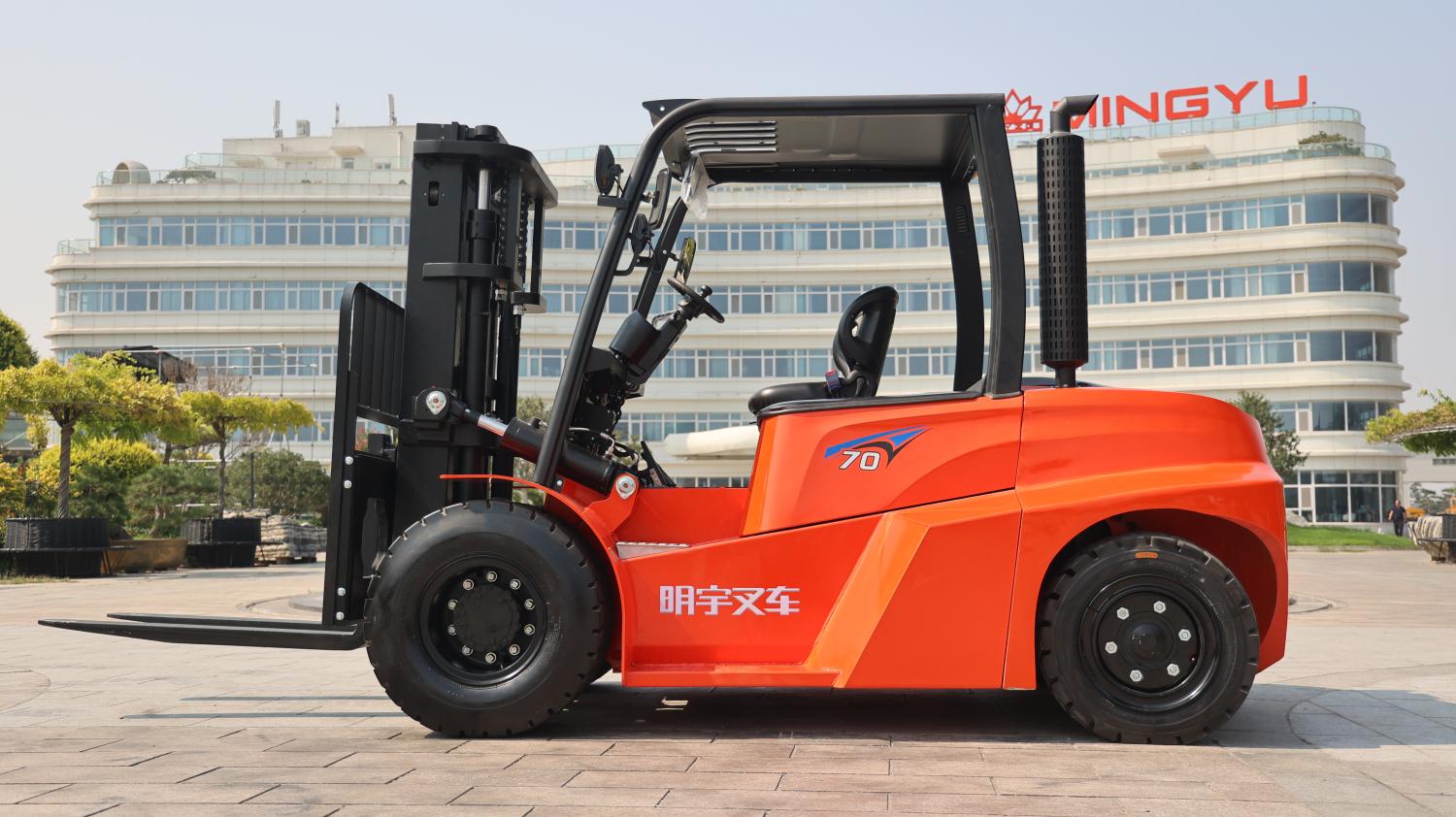Diesel forklifts, while powerful and durable, are notorious for their environmental impact. This article delves into the complexities of diesel forklift emissions, examining the types of pollutants released, the associated health and environmental consequences, and the ongoing efforts to mitigate their impact.
Understanding Diesel Forklift Emissions
Diesel engines, the workhorses of many industries, operate by combusting diesel fuel. This process, while efficient in generating power, inevitably produces a range of emissions with varying degrees of harmfulness:
Particulate Matter (PM):
Tiny solid or liquid particles suspended in the air.
Includes soot, dust, and other substances.
Can penetrate deep into the lungs, causing respiratory problems, heart disease, and even lung cancer.
A significant contributor to air pollution and smog.
Nitrogen Oxides (NOx):
Formed when nitrogen and oxygen in the air react at high temperatures within the engine.
Contribute to the formation of smog and acid rain.
Can irritate the respiratory system and worsen existing respiratory conditions.
Carbon Monoxide (CO):
An odorless, colorless gas produced by incomplete combustion.
Can reduce the amount of oxygen carried by the blood, leading to headaches, dizziness, and even death in high concentrations.
Hydrocarbons (HC):
Unburned or partially burned fuel.
Contribute to smog formation and can have adverse health effects.
Carbon Dioxide (CO2):
A greenhouse gas that contributes to climate change.
Health and Environmental Impacts
The emissions from diesel forklifts pose significant risks to both human health and the environment:
Human Health:
Respiratory Issues: Exposure to diesel exhaust can lead to a range of respiratory problems, including coughing, wheezing, shortness of breath, and asthma.
Cardiovascular Problems: Studies have linked diesel exhaust exposure to increased risk of heart attacks and strokes.
Cancer: Prolonged exposure to diesel exhaust has been linked to an increased risk of lung cancer.
Other Health Effects: Diesel exhaust can also irritate the eyes, nose, and throat, and may have adverse effects on the nervous system.
Environmental Impact:
Air Pollution: Diesel emissions contribute significantly to air pollution, reducing air quality and visibility.
Climate Change: CO2 emissions from diesel engines contribute to global warming.
Water Pollution: Diesel fuel spills can contaminate soil and groundwater.
Mitigating Diesel Forklift Emissions
The environmental and health concerns associated with diesel forklift emissions have spurred the development of various mitigation strategies:
Engine Technology Advancements:
Selective Catalytic Reduction (SCR) Systems: These systems use a catalyst to convert NOx into harmless nitrogen and water.
Diesel Particulate Filters (DPFs): These filters trap particulate matter within the exhaust system, significantly reducing PM emissions.
Exhaust Gas Recirculation (EGR): This technology reduces NOx emissions by recirculating a portion of the exhaust gas back into the combustion chamber.
Alternative Fuels:
Biodiesel: A renewable diesel fuel derived from plant oils or animal fats.
Liquefied Natural Gas (LNG): A cleaner-burning alternative to diesel fuel, with lower emissions of PM and NOx.
Maintenance and Operation:
Proper Engine Maintenance: Regular maintenance, such as oil changes and filter replacements, can help ensure optimal engine performance and minimize emissions.
Operator Training: Training operators on proper driving techniques, such as smooth acceleration and braking, can help reduce fuel consumption and emissions.
Alternative Technologies:
Electric Forklifts: Powered by batteries, electric forklifts produce zero emissions at the point of use.
Fuel Cell Forklifts: These forklifts use hydrogen fuel cells to generate electricity, producing only water vapor as a byproduct.
Regulations and Standards
Governments worldwide have implemented increasingly stringent regulations to control diesel emissions:
Emission Standards: Regulations such as those set by the Environmental Protection Agency (EPA) in the United States and the European Union (EU) establish limits on allowable emissions levels for diesel engines.
Emission Testing Programs: Regular emissions testing helps ensure that vehicles comply with emission standards.
Incentives for Cleaner Technologies: Governments offer various incentives, such as tax breaks and subsidies, to encourage the adoption of cleaner technologies, such as electric and fuel cell forklifts.
The Future of Diesel Forklift Emissions
Despite advancements in emission control technologies, diesel forklifts will likely continue to play a significant role in many industries for the foreseeable future. However, the trend is towards cleaner, more sustainable alternatives.
Continued Technological Advancements: Ongoing research and development will continue to improve the efficiency and emissions performance of diesel engines.
Increased Adoption of Alternative Technologies: As the costs of electric and fuel cell forklifts decrease and their performance improves, we can expect to see a significant increase in their market share.
Shift Towards Sustainability: The increasing focus on sustainability will drive the adoption of cleaner technologies and practices across all sectors, including the material handling industry.
Conclusion
While diesel forklifts offer numerous advantages, including power and durability, their emissions pose significant environmental and health concerns. However, through a combination of advanced emission control technologies, alternative fuels, and the increasing adoption of cleaner alternatives, it is possible to mitigate the impact of diesel forklift emissions and create a more sustainable future for the material handling industry.
Post time:Feb.04.2025



